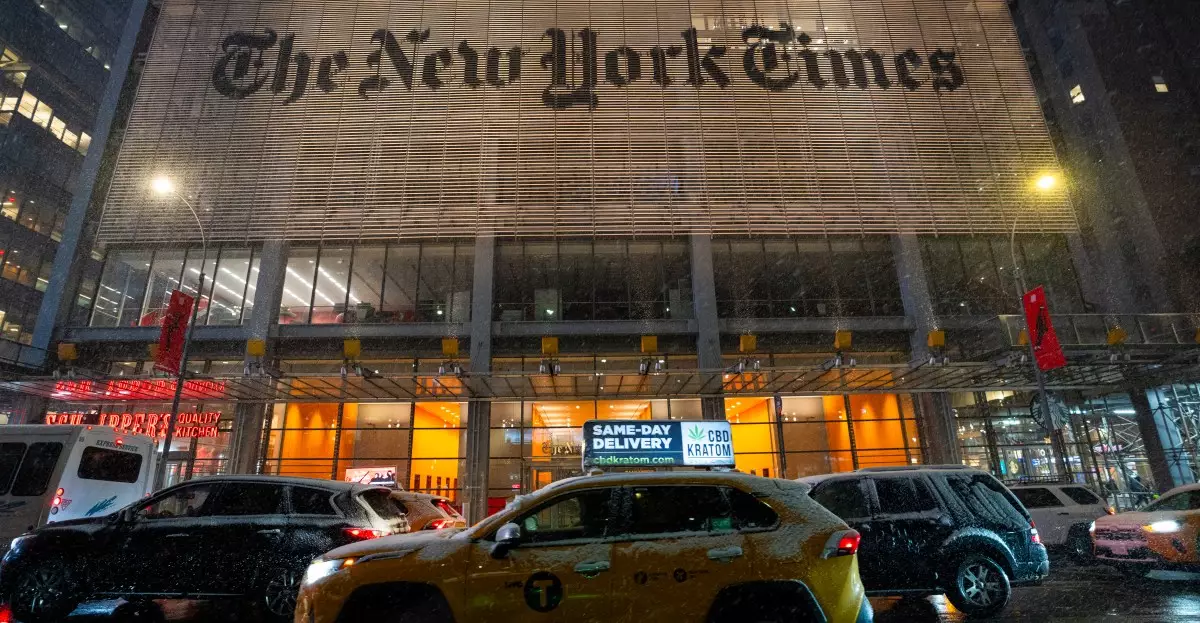As technology continues to advance at an unprecedented rate, the news industry finds itself at a crossroads, grappling with the integration of artificial intelligence (AI) into its core processes. A recent development has surfaced regarding The New York Times embracing AI tools for its editorial staff, which raises essential questions about the future of journalism, the authenticity of reporting, and the role of human oversight in the age of automation. The following analysis explores these themes, focusing on the implications of AI implementation within journalistic practices.
The New York Times has reportedly encouraged its editorial staff to utilize AI for a variety of tasks, including editing, creating headlines, generating interview questions, and summarizing content. This shift signifies a move towards integrating AI as a supportive tool rather than a replacement for traditional journalism. The internal rollout of a new AI tool, Echo, is a prime example. Echo aims to ease the workload of journalists by providing assistance in summarizing articles and developing promotional content for social media. As overarching trends show, this is not a unique phenomenon; many media organizations are experimenting with AI technologies.
Nevertheless, while the integration may streamline certain processes, it raises critical concerns about the essence of journalism itself. How much can technology intervene in the journalistic process without jeopardizing accuracy and the quality of information? As AI begins to play a more prominent role, the lines separating journalistic integrity from algorithmic influence may become increasingly blurry.
In a memorandum from The Times, the commitment to maintaining human involvement in journalism was reiterated. Editorial staff were reminded that while AI can facilitate various aspects of reporting, the responsibility lies firmly with human journalists. Phrases like “Times journalism will always be reported, written, and edited by our expert journalists” reflect an awareness of the delicate balance required when marrying technology with traditional reporting.
Despite announcing guidelines that restrict AI from drafting or significantly altering articles, and stipulating that all AI-generated content undergoes review by seasoned editors, there remains an underlying tension. The concern is that the rapid adoption of AI might lead to complacency, where the human touch is diminished in favor of expediency. AI can undoubtedly assist in generating ideas and improving efficiency; however, the subtle nuances of storytelling and the ethical implications of reporting cannot be entirely trusted to machines.
The move towards AI-enabled journalism also presents ethical challenges that demand rigorous scrutiny. One noteworthy aspect of The Times’ decision involves ongoing legal battles with tech giants like OpenAI and Microsoft, following allegations that their AI systems were trained using Times’ content without authorization. This confrontation underscores the precarious relationship between tech and media, emphasizing the need for robust ethical frameworks.
On one hand, AI can empower journalists by providing insights and suggesting queries for interviews, reshaping how news is created. On the other hand, the responsibility for content accuracy and ethical journalism cannot be outsourced to automated systems. As AI tools like GitHub Copilot and Google Vertex AI are deployed in newsrooms, questions arise surrounding authorship, accountability, and potential biases that AI may inadvertently propagate.
Looking ahead, the successful integration of AI within newsrooms hinges on creating a collaborative model where human expertise and machine learning coexist harmonously. Designing an editorial ecosystem where AI acts as a tool to enhance human judgment rather than replace it is crucial. Journalists must leverage the efficiencies provided by AI tools to focus on investigative work, in-depth storytelling, and ensuring the authenticity of their reporting.
Moreover, ongoing training and updates on the ethical implications of AI content creation should form an integral part of newsroom practices. As the Line between digital innovation and journalistic integrity becomes increasingly tenuous, cultivating a culture of accountability and verification remains paramount in preserving the trusted relationship between media outlets and their audiences.
The embrace of AI technology by prominent publications such as The New York Times heralds a transformative moment in journalism. While these advances present opportunities for growth and greater efficiency, they also demand careful consideration of ethics, accountability, and the very essence of what it means to inform the public. The future of journalism may well rely on a strategic partnership between human journalist and artificial intelligence, where technology serves to enhance, rather than replace, the invaluable contributions of the human mind in storytelling.


Leave a Reply